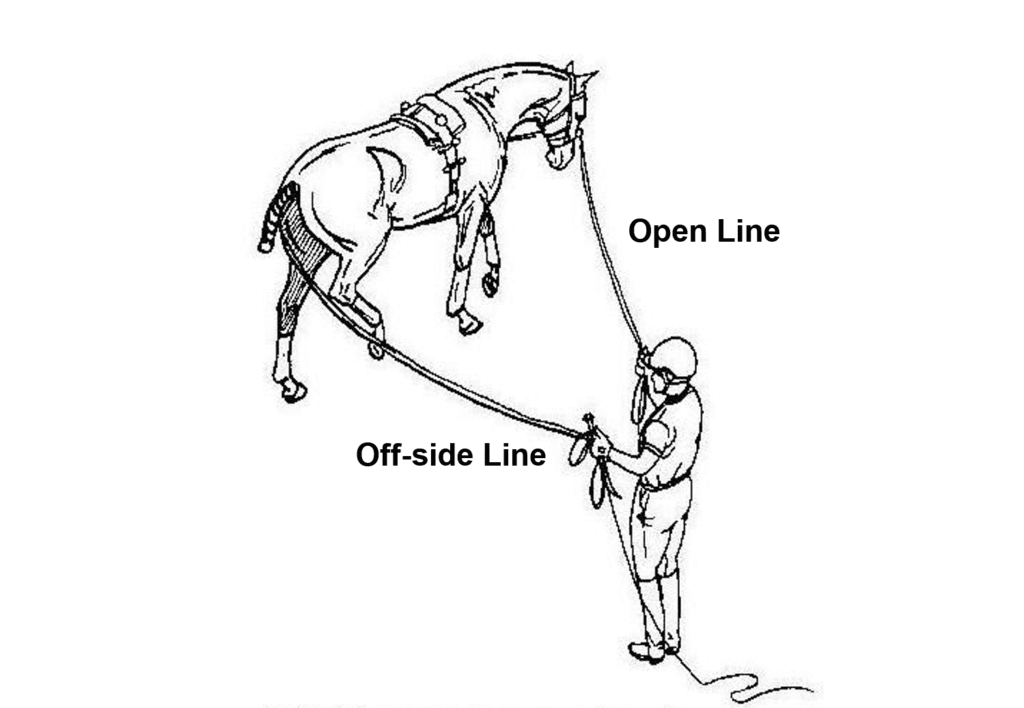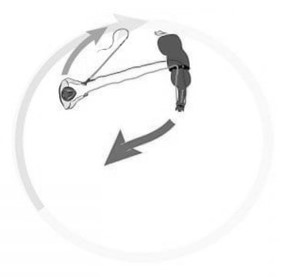Back to: Hitching Up
Lungeing
Conventional lunging is a fundamental step in the starting of young horses and/or training a horse to drive, and is the first thing to do beyond teaching them ground manners.
Before considering attaching side reins, basic lunging teaches the horse to yield laterally and to step forward from the whip (which assumes the role of the rider’s leg). It lets you teach the horse about limits and about moving attentively in a stabilized tempo.
Adding the side reins gives the horse something to work into rather than simply free-flowing into empty space. Over time you can progressively develop strength in the horse’s hindquarters and a round topline which will lead you toward collection.
Long Lining (Double Lunging)
When we speak of long lining, we differentiate that from “ground driving.” The first phase of long lining is to be able to lunge the horse on the circle with “double lines”.
How to do it- Going Counterclockwise
You’ll hold the right line just like you would if you were longeing the horse. This is called an open line because it’s not connected to anything but the horse’s head.
The off-side line is a closed line because it’s threaded through the stirrup or surcingle.

This lets you do everything regular lunging permits but additionally allows you to independently supple the horse’s inner jaw while adjusting the length of the horse’s frame in real-time with the outside line.
Progression
Combining the pushing effect of the whip with the half halt on the outside also allows you to shift his weight towards the rear.
After the horse has been introduced to straight-line leg yielding and stays reliably forward to the handler’s hand, the long lines can be attached symmetrically.

Then the horse is able to perform changes of direction in trot and even in canter. A skilled handler can perform all the movements from an Intro test all the way to more advanced exercises.
Benefits
- Exercise and conditioning
- Improvement of bend
- Improvement of rhythm and regularity of movement
- Lengthening/collection work
- Obedience
- Enhance driver confidence
- Improved rein communication
- Opportunity for inexperienced drivers to learn the “feel” of the reins.